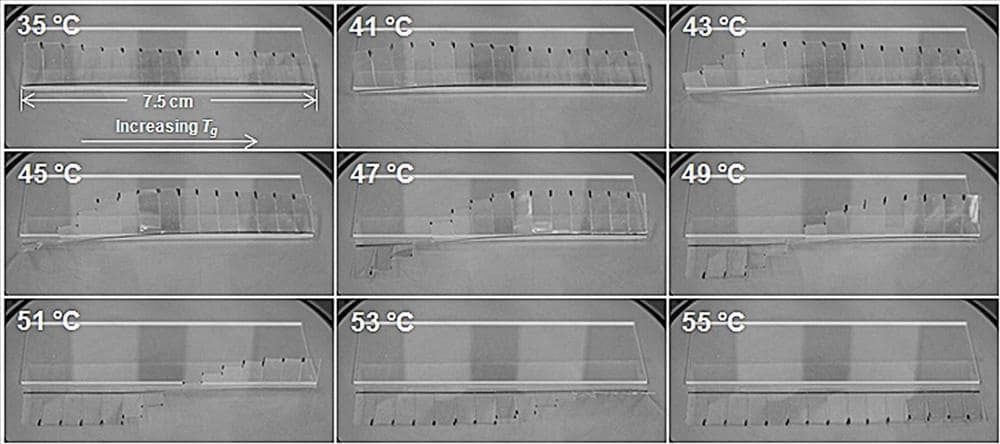To date, polymers of this type have been limited to only two or three forms. The researchers succeeded in developing a process in which segments of a defined polymer with structural memory react independently to different temperature stimuli

Researchers at the University of Syracuse have succeeded in applying the concept of functional materials for polymers with structural memory.
Shape memory polymers (SMPs) are a type of "smart" materials that are able to switch between two separate forms, from the temporary form to the predetermined permanent form (the term in Wikipedia). Structure memory polymers function as stimulants, initially heating the object into a temporary shape and then cooling it. In the second step, using a second stimulus (ie, heat) the object is able to return to its original shape.
To date, polymers of this type have been limited to only two or three forms. The researchers succeeded in developing a process in which segments of a defined polymer with structural memory react independently to different temperature stimuli. The findings of this study were published in the scientific journal Soft Matter.
functionally graded materials (FGM, The term on Wikipedia) are defined as synthetic materials in which the properties of their composition, microstructure and other properties change along sections within the material. The goal of the researchers was to apply the concept of memory polymers to create a material with a segment that can be changed without affecting the properties of other segments in the same material.
The researchers prepared a plate with a temperature gradient by applying heat on one side and applying cooling on the other side. The practical temperature drop was verified by measuring different points along the plate. The polymers with the structural memory were placed by this plate in order to determine the different transition temperatures.
Initially, the researchers examined the fragmented polymers by micro-grooving the surface and then heating the polymer. During heating, each groove returned to its original smooth shape while reaching the transition temperature along the surface segments.
The second test included cutting the polymers and bending the cut segments. This polymer is formed by a plate that heated the material uniformly. During the test, the researchers demonstrated that during the heating of the plate, each "finger" of the cut surfaces independently returned to its original, undistorted shape, as the temperature of the plate approached the transition temperature.
"We are very enthusiastic about this new approach to preparing polymers with structural memory, an approach that could enable the development of innovative devices with complex mechanical architecture," notes the lead researcher.
The new method has opportunities for the development of diverse applications, starting with cheap temperature gauges for areas whose temperatures could not be measured using normal methods, to indirect indicators for determining the completion of sterilization of tools, and ending with the introduction of these polymers into product packaging (for the transportation industry and food storage ) to indicate the maximum temperature allowed for product exposure.

One response
It seems to me that such technology can be used to develop robots or machines that will use plastic "muscles" with structural memory...